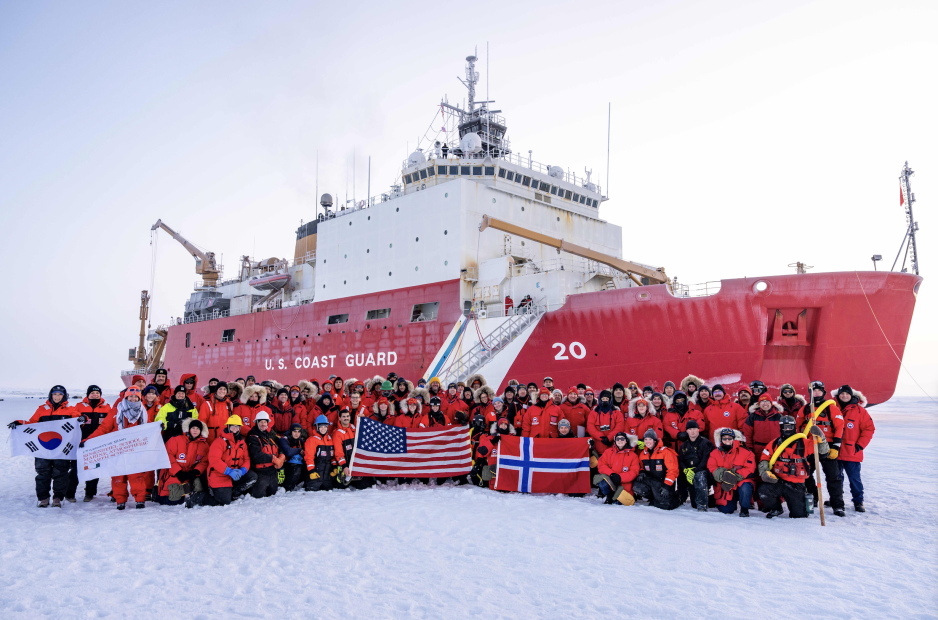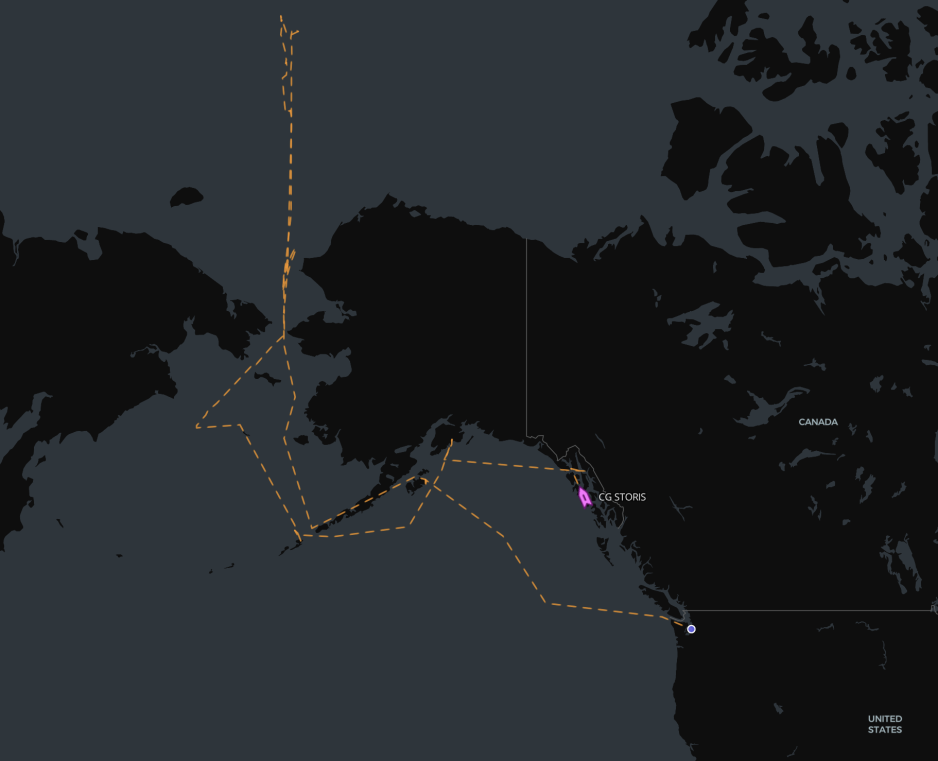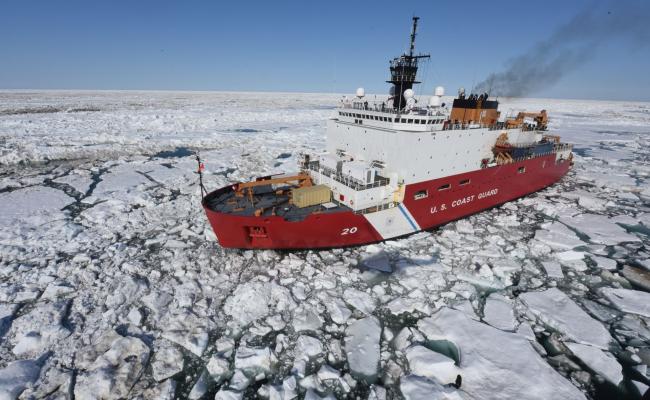U.S. Icebreaker Healy Wraps up Four-Month Patrol of Arctic, Countering Growing Chinese Presence

Crewmembers, researchers, and partner nation representatives sailing aboard U.S. Coast Guard Cutter Healy (WAGB 20) pose for a photo on the ice in the Arctic Ocean, Oct. 1, 2025. Coast Guard operations in the Arctic are critical to expanding our understanding of the Arctic operating environment for advancing national security objectives. (U.S. Coast Guard photo by Petty Officer 3rd Class Chris Sappey)
U.S. Coast Guard icebreakers Healy and Storis conducted 129-day and 112-day Arctic deployments this summer. A substantial presence increase over previous summers. Both vessels monitored growing vessel activity in the region with five Chinese research vessels operating in the waters around Alaska.
With winter quickly approaching in the High North, the U.S. Coast Guard (USCG) has concluded its annual Arctic deployments. This summer, for the first time in more than a decade, the service dispatched two icebreakers to the region simultaneously.
In addition to Healy, the newly acquired icebreaker Storis also supported Operation Frontier Sentinel to protect U.S. sovereign rights and territory, and promote national security in the Arctic. Storis is the first icebreaker to join the USCG in more than 25 years.
The vessel is a much-needed addition to the Coast Guard’s icebreaker assets, while the service awaits construction of up to a dozen new icebreakers.
“As a medium polar icebreaker, Storis expands the U.S. operational forces available to secure maritime dominance in the Arctic and will support Coast Guard missions while the agency pursues acquisition of additional medium and heavy polar icebreakers,” the USCG said.
Storis officially joined the USCG on August 10 and departed on its inaugural patrol the next day. It returned to Seattle after 112 days in early October.

Route of Storis’ 2025 Arctic patrol from Juneau, Alaska into the high Arctic and return to Seattle, Washington. (Source: MagicPort Maritime Intelligence)
Tracking Chinese vessels
Healy, the USCG's largest vessel, traveled more than 20,000 nautical miles during its 129-day patrol which took it from the Bering Sea into the Beaufort and Chukchi Seas and onwards into the central Arctic Ocean.
At times the vessel patrolled right along Russia’s Exclusive Economic Zone and in proximity of the Northern Sea Route.
The icebreaker shadowed and monitored foreign vessel activity in the waters of the U.S. Extended Continental Shelf, including three Chinese research vessels. This summer China deployed five vessels, including several icebreakers, into the Arctic.
“Five China-affiliated research vessels operated in the Arctic region over the summer, and Healy was one of several Coast Guard assets deployed to control, secure, and defend U.S. sovereign interests,” the USCG said in a press release.

Healy’s extensive 20,000 nautical mile 2025 Arctic deployment from Seattle across much of the high Arctic and back to Seattle. (Source: MagicPort Maritime Intelligence)
The newly acquired icebreaker Storis joined Healy in querying Chinese vessels during its patrol through the Bering Strait.
“In early September, Storis entered the ice for the first time as a Coast Guard cutter to relieve Coast Guard Cutter Healy (WAGB 20) and monitor the Chinese-flagged research vessels Jidi and Xue Long 2,” the USCG said.
Xue Long 2 is China’s largest and first domestically constructed polar icebreaker.
Dual role of science and national security
Part of Healy’s mission also supported scientific research including the deployment and recovery of oceanographic equipment.
The National Science Foundation and international partners maintain a network of sensors and probes to study the changing physical, biological, and chemical properties of the Arctic Ocean. In 2023 Healy’s mission took it all the way to Tromsø, Norway with a four-day port call.
Last summer’s Arctic deployment was interrupted when Healy suffered an engine room adjacent fire in the Canadian Arctic in August.
It made it back to Seattle for emergency repairs on one engine and redeployed on October 1 on an abbreviated late fall deployment that lasted into December.



